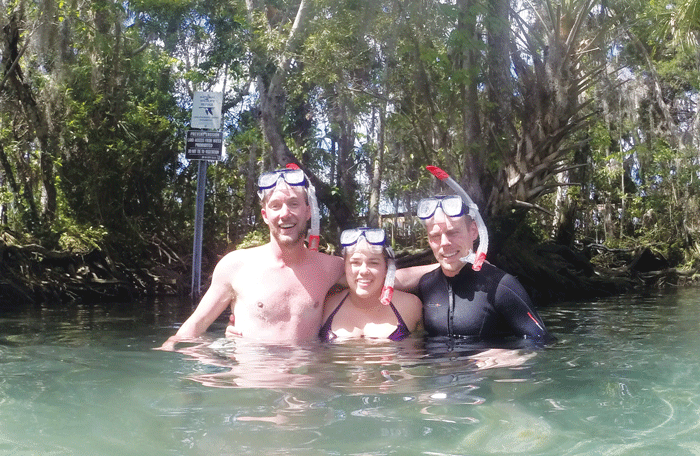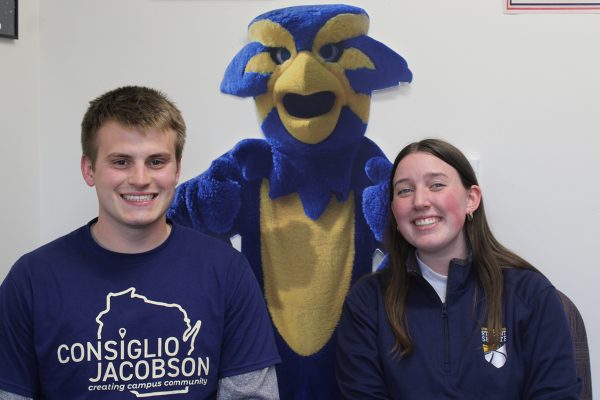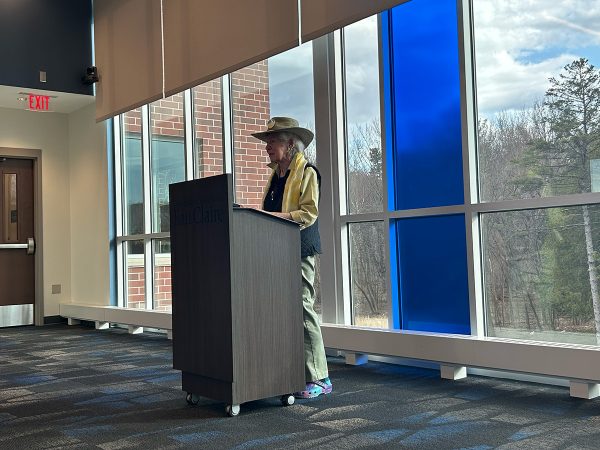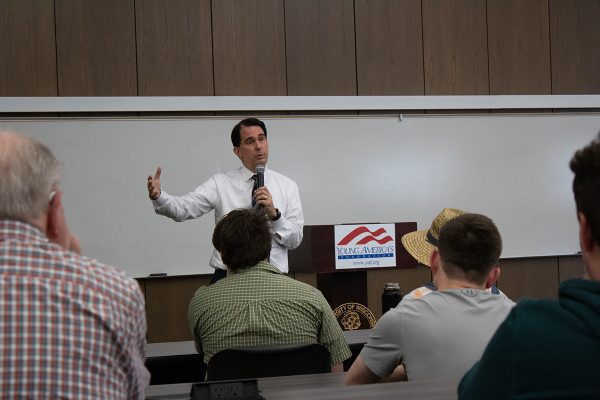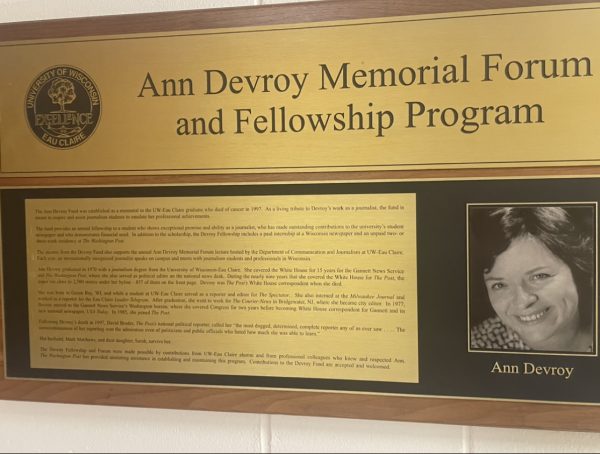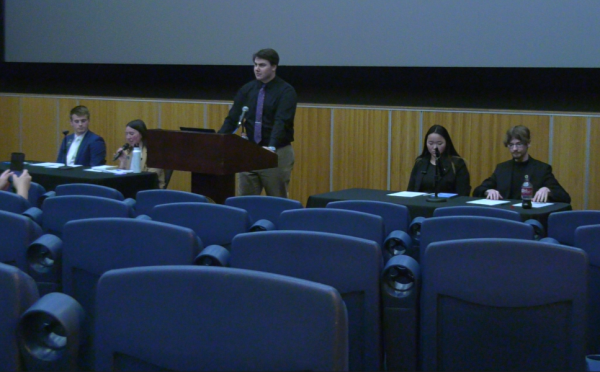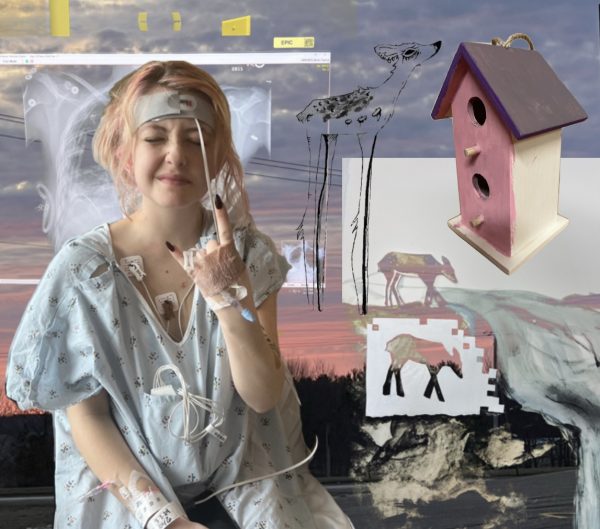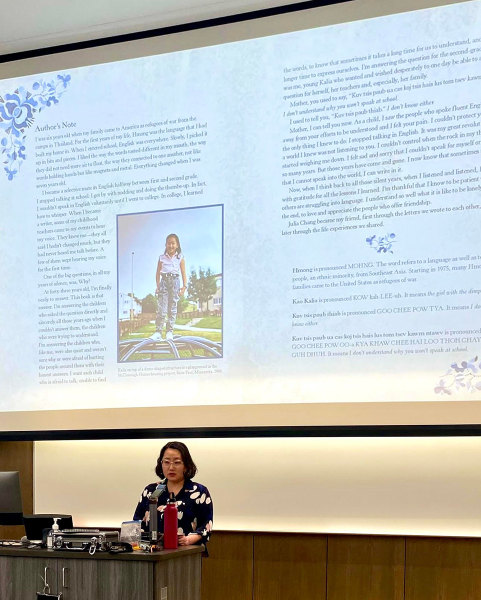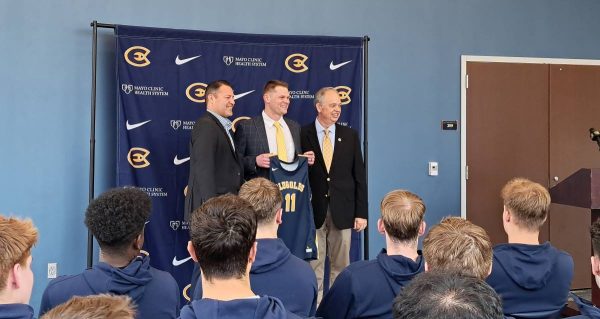Leading the way
Three UW-Eau Claire students led their peers on an adventurous spring break
ALWAYS ADVENTURING: Senior Sam Worple, freshman Allie Lenzmeier and junior Dave Simenson snorkeling at in Crystal River, Fla. The three served as student trip leaders on a spring break trip put on by the Environmental Adventure Center. Submitted
March 26, 2014
Among the college students who headed for warmer weather in the sunshine state was a group of 18 UW-Eau Claire students.
But these students were looking for more adventure than the average beach bum.
The Environmental Adventure Center annually offers students an alternate way to spend their spring break; this year it meant driving to Florida to explore state parks under the direction of three student trip leaders: Allie Lenzmeier, Dave Simenson, and Sam Worple,
“Sure I’ll take a day on the beach, that’s fine, but we are out looking for an adventure and you’re not going to get that laying down on a blanket,” Simenson said.
Becoming leaders
To become a student trip leader an expressed interest in the outdoors and involvement in the EAC is necessary, Worple said.
Worple, a senior business major, has worked as a trip leader since his sophomore year, but this was his first spring break trip. His outdoor expertise are snowboarding and backpacking, he said.
“I’ve always loved nature. Throughout my whole college career I’ve never really done the typical college scene,” Worple said. “This is in my blood, I don’t know any other way to spend a spring break other than in a tent”
Lenzmeier, a freshman, was also a rookie to EAC spring break trips; this was the first trip she led. She said the planning process united the trio of leaders.
“We ended up having great chemistry. Our leadership styles were all very similar so it ended up being great,” Lenzmeier said.
Simenson served as the veteran EAC spring breaker among the leaders. The junior geography major has spent his previous two spring breaks leading trips to Moab, Utah. He became comfortable planning for the trips to Utah so this year provided a new set of challenges for him, he said.
The EAC hasn’t taken a group to Florida in more than five years which made planning logistics difficult, Simenson said.
Logistics are Simenson’s strong suit though, Lenzmeier said.
“(Simenson) was very good at logistics and planning while (Worple) was very good at lifting people’s spirits,” Lenzmeier said. “All of us together we kind of covered all the bases as far as having a well rounded leadership style.”
Planning
Before leaving town in two university suburbans and one rented Toyota, extensive planning had to be done. Planning is among the leader’s top responsibilities, Worple said.
“First and foremost our responsibility is making sure everyone gets from point A to point B and they make it safely. That’s number one,” Worple said. “Other than that we plan the entire trip weeks before hand.”
The team was responsible for planning the route, staying on budget and planning for meals.
To plan the route, Simenson said he consulted a former student trip leader who had gone on a similar trip to
Florida.
“He gave us some good options and suggested the Suwannee River which was our starting point,” Simenson said.
The plan for the nine-day excursion was to spend four days canoeing the central region of the Suwannee River, which flows out of Georgia and eventually winds up in the coast. Afterward, the leader’s itinerary had the group moving on to a variety of state parks.
However, when a thunderstorm moved in on day two of canoeing the river, plans had to be adjusted, Worple said.
“The river was rising like a foot an hour and with having inexperienced paddlers we didn’t think it was very safe for them to be on a river that was already high with a lot of debris,” Worple said. “So we called our outfitters, got pulled out and we headed down to a different state forest in Florida.”
Freshman Emily Larranaga said the leaders were good at acting on their feet when the rain hit.
“The leaders were great. They rearranged everything and figured it out together,” Larranaga said. “We just all tried to go with the flow.”
Worple said he was disappointed that the group didn’t get to spend a full four days on the river because it was the portion of the trip that offered true wilderness camping to the participants.
Instead the group had to resort to car camping, which is considered to be an easier way to camp and in some ways defeats the purpose of student trip leaders, Worple said.
“The trips we provide are supposed to be more of a wilderness immersion whereas car camping is more of going and hanging out with friends which was fine, but anyone can go out and car camp you don’t need us for that,” Worple said.
The rain threw a wrench in the planning; another obstacle the leaders faced was the size of the group they were leading.
Playing peacekeepers
Traditionally, the annual spring break trips offered by the EAC bring nine students and two or three student trip leaders. This year, 15 participants went on the trip with leaders. The larger group size provided many difficulties, Lenzmeier said.
“When you have a group that big some people aren’t going to get along, some people are kind of going to go their own direction,” Lenzmeier said.
Worple said a key aspect of EAC trips is forming relationships between the leaders and the participants, which was difficult to achieve in the large group.
“Keeping everyone happy was tough,” Worple said. “It was also very hard for the three trip leaders to become friends with everyone, because that’s what we try to do on our trips, but with 15 people it’s really hard to do that.”
Larranaga said all three leaders had goofy, outgoing personalities that made the trip fun for her.
While most participants remained positive and enjoyed their trip exploring nature some did not, Worple said. When situations of conflict arose the leaders simply took the reigns, Lenzmeier said.
“As the leadership when things didn’t go according to plan we took it into our own hands, because they agreed to an itinerary that we made so we ended up making all the decisions in the end,” she said.
Simenson said the trip taught him a lesson in group dynamics and even though there were difficulties at times, there is no other way he would have wanted to spend his spring break, he said.
“There’s really more to gain that just being out in nature. It’s the camaraderie you build with other people,” Simenson said. “It’s second to none when you’re out there in the sticks. One of my favorite parts of leading these trips is you see the best and worst of people when you’re out in the woods, but mostly the best.”

